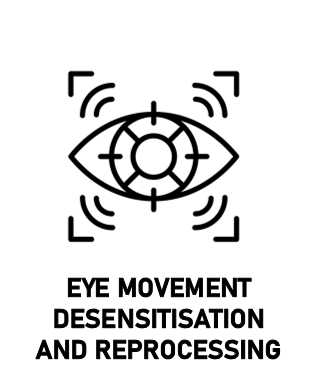Eye Movement Desensitisation and Reprocessing (EMDR) is a type of talking therapy that can be used in the treatment of some mental health conditions. It is a rather new type of therapy.
Like many other types of treatment, there are advantages and disadvantages to Eye Movement Desensitisation and Reprocessing, as we cover in this article.

What is Eye Movement Desensitisation and Reprocessing?
Eye Movement Desensitisation and Reprocessing (EMDR): While more of a newer treatment, EMDR is an exciting intervention that has helped many people cope with trauma-based conditions. This therapy involves an individual moving their eyes from side-to-side, with the therapist directing their eye movements. During this, the individual recalls their traumatic experience. EMDR is believed to help an individual change how they think about the traumatic event, with the therapist aiming to facilitate change.
Advantages of Eye Movement Desensitisation and Reprocessing
- Helpful for those that struggle to talk about the past: As EMDR is a natural process, a person should find it easier to talk about their trauma. It is normal for a person to not like talking about their past, but EMDR may offer a way of processing trauma effectively.
- Seems to be effective for trauma-related conditions: When a person has unresolved traumas from the past, it can be difficult for them to move on with their life. With this in mind, EMDR can be crucial for a person’s life, as it can help a person move on from a difficult past. It does seem to be effective in treating trauma.
- Enormous potential of EMDR: Following on from the above, EMDR has an outstanding potential to it. It can lead to total remission of symptoms for some, which clearly is an amazing prospect.
- Short-term therapy: Unlike many forms of therapy, EMDR is more of a short-term approach to treating trauma. Trauma-related therapy often takes several years to work, but EMDR could potentially be much quicker.
- Useful techniques are taught: As part of EMDR, a person is taught techniques and tools that can be used in future life. These include deep breathing techniques and mindfulness.
- Evidence-based: The creator of EMDR – American psychologist Doctor Francine Shapiro, developed the form of therapy based off of her own experiences, using areas and techniques that had helped her. It is therefore evidence-based, and has worked in the past.
Disadvantages of Eye Movement Desensitisation and Reprocessing
- Brings up past trauma: Without doubt, the most difficult part of EMDR is that it involves bringing up past trauma. This can be a challenging and emotional process, But ultimately, this is with the aim of providing long-term relief.
- EMDR is controversial: It has been argued that EMDR is a type of pseudoscience that has no place in modern-day mental health treatment. EMDR’s belief that the mind can heal itself like a physical wound is also controversial.
- It isn’t entirely clear how it works: Unlike some therapies that have a clear structure and meaning behind them, EMDR doesn’t have a set, scientific backing behind it. Many question whether or not the belief that the mind can heal itself like a physical wound is actually true.
- EMDR needs to follow a set structure: When creating EMDR, Dr. Shapiro put forward an eight-phase approach [construction] that should be followed. But in the years since, as EMDR has become more and more popular, not so many professionals are adhering to this set approach, which may not make it as effective as it should be.
- Statistics are not conclusive: While the statistics are somewhat positive, very few studies have found that EMDR has a wholly-positive effect. Not everyone will benefit from EMDR, and it could potentially make their trauma worse.
- Relapse is possible: The long-term effects of EMDR are not clear. It is possible that a relapse in symptoms could take place in the future, though this is something associated with many types of talking therapies.
See Also
- Therapy Home
- Everything You Need To Know About Talking Therapy
- FAQ’s About Talking Therapy
- Eye Movement Desensitisation and Reprocessing: Everything You Need to Know
- The Advantages and Disadvantages of Eye Movement Desensitisation and Reprocessing
- 8 Things You Should Know About Eye Movement Desensitisation and Reprocessing
- The Science Behind Eye Movement Desensitisation and Reprocessing
- The Eight Phases of Eye Movement Desensitisation and Reprocessing
Disclaimer
This website should be used purely for informational purposes, and does not intend to, nor should it ever, be used as a replacement for professional medical advice.
We strive to keep all of our pages updated, and ensure that our website is full of factual and in-depth information. However, we encourage you to browse this website with care.
As a reminder, this website and all content within it cannot and should not replace the advice of a trained medical professional. You can read our full disclaimer at this link.
Helplines
If you are struggling with your mental health, help is available. With the right support and treatment, you can make a recovery. For information on helplines, or if you are in a state of crisis, please visit our crisis page by clicking on the relevant link for your geographical location (United Kingdom), (United States), (International). You can also see how to get mental health treatment and the process involved by clicking this link.
References
Text


































